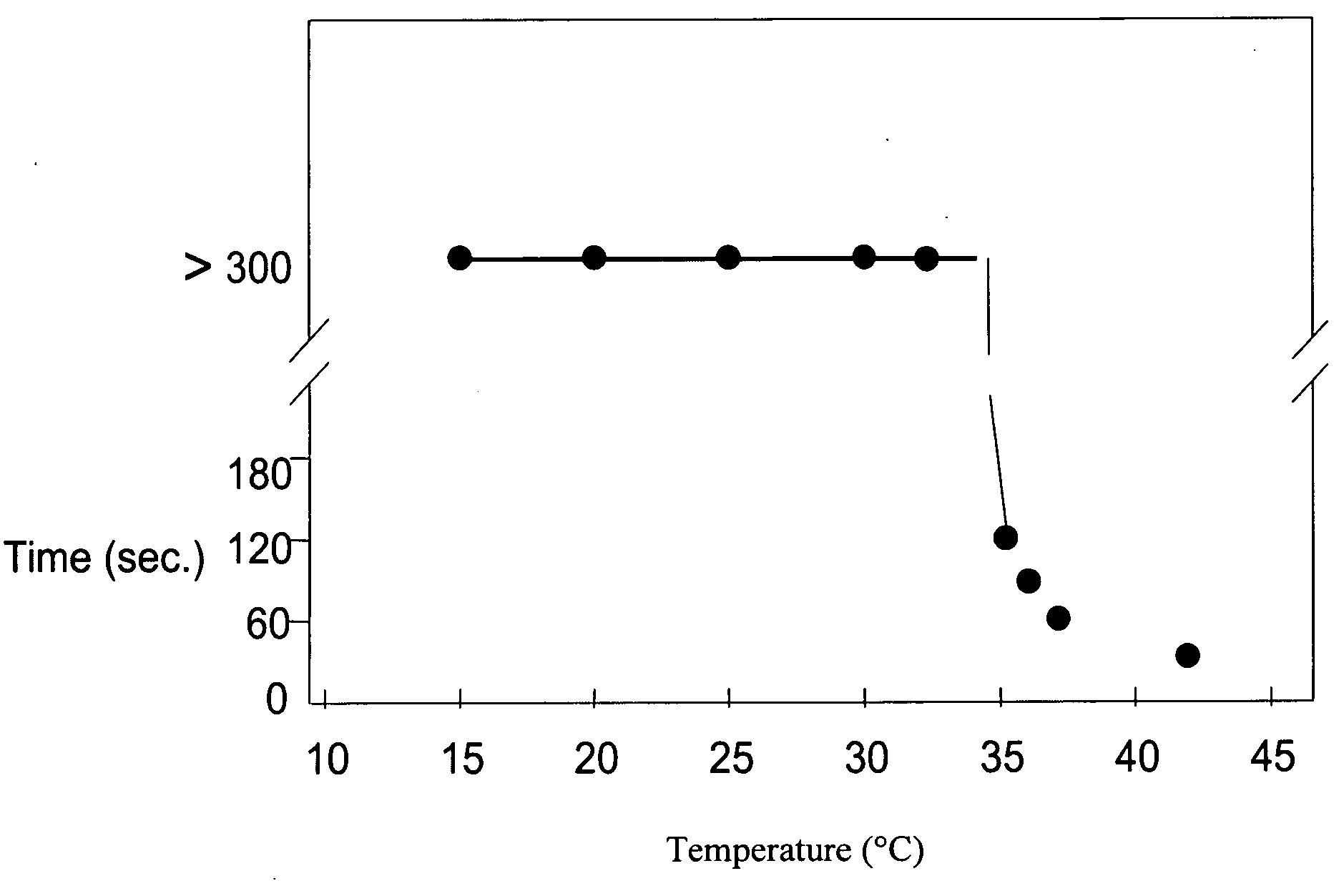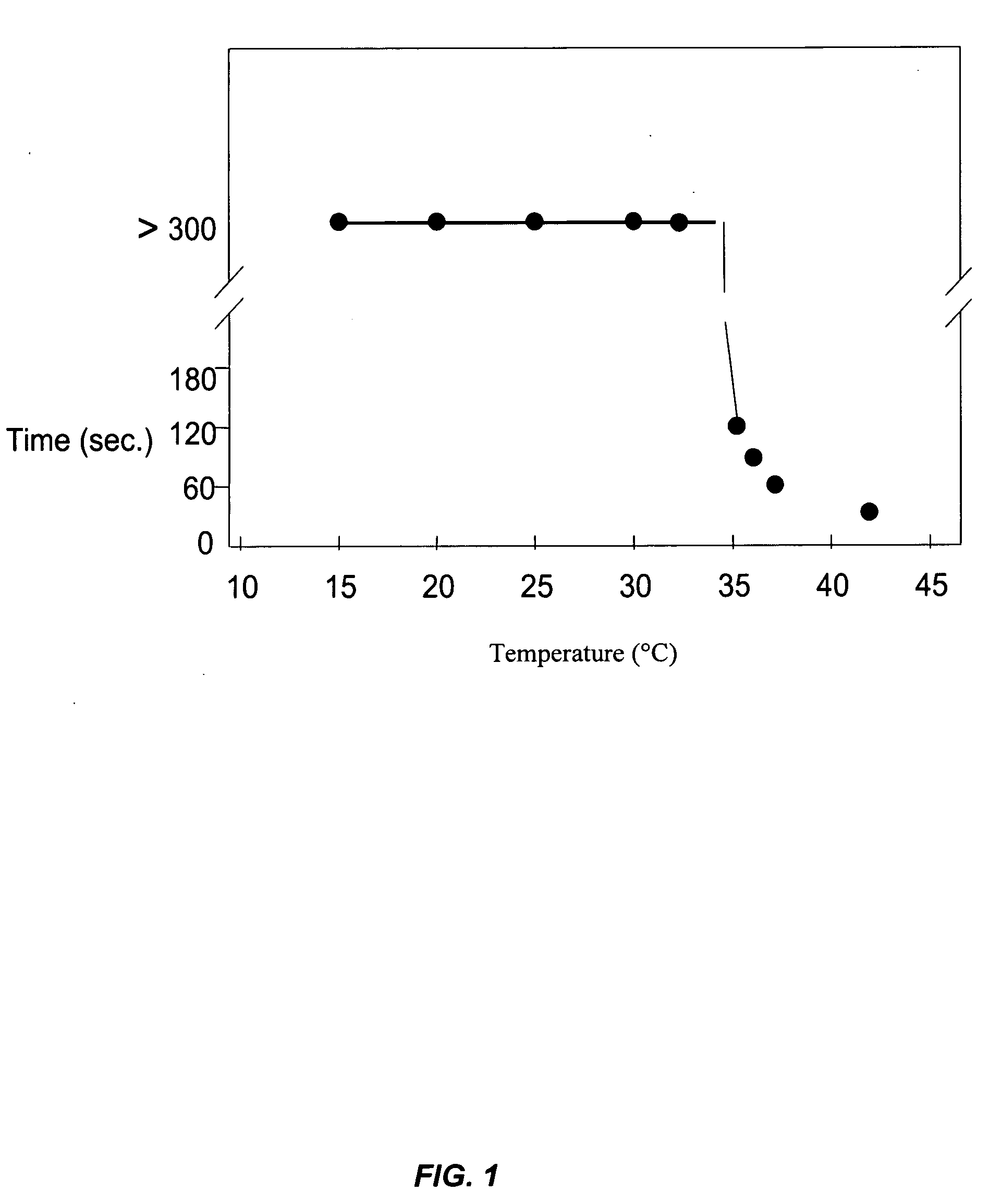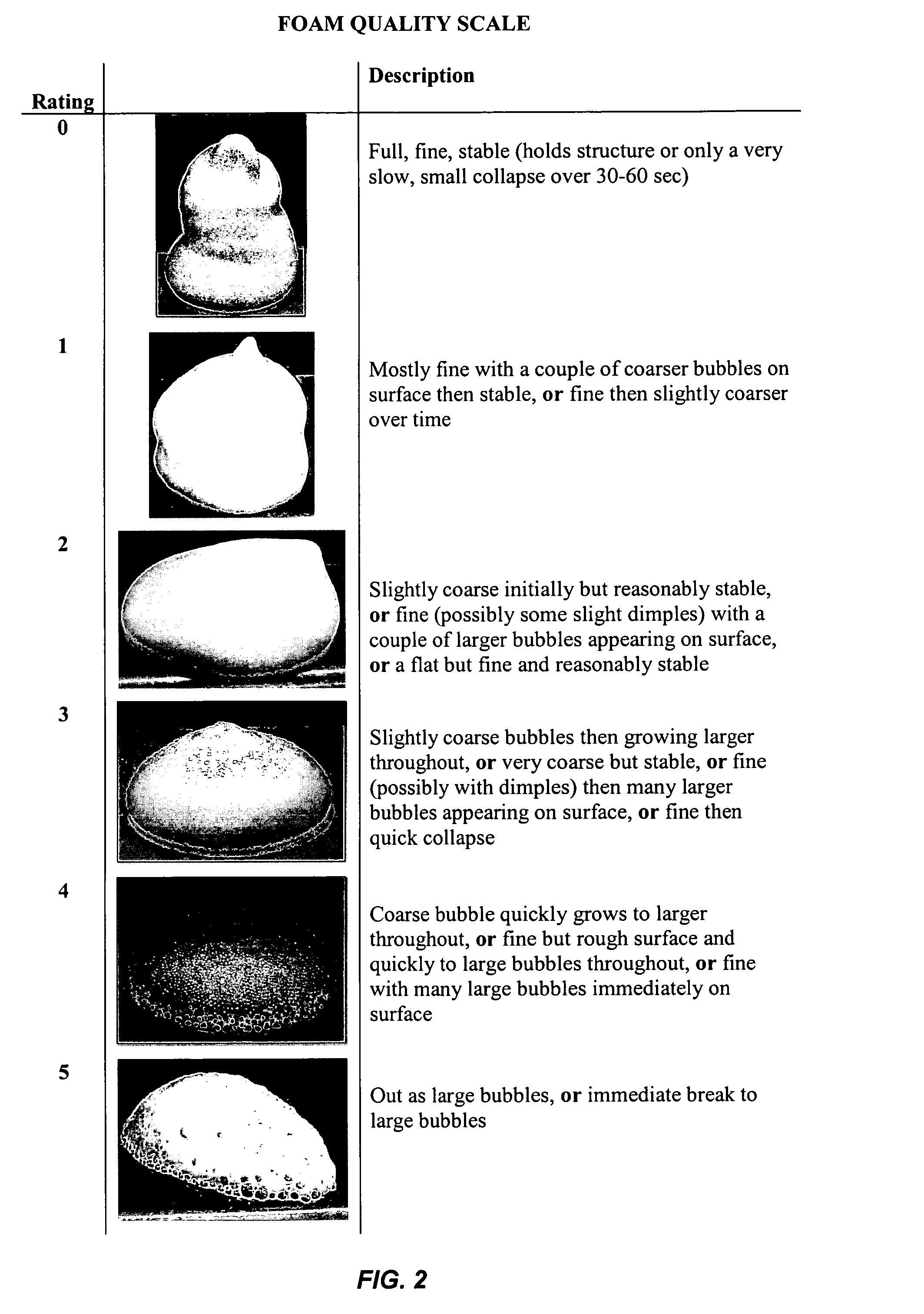Pharmaceutical foam
a foam and foam technology, applied in the field of topical delivery, can solve the problems of prolonged rub-in, dangerous and even fatal clindamycin colitis, oily residues, etc., and achieve the effects of low residue, easy application, and non-runny
- Summary
- Abstract
- Description
- Claims
- Application Information
AI Technical Summary
Benefits of technology
Problems solved by technology
Method used
Image
Examples
example 1
[0103] This example illustrates the effect of pH on the stability of clindamycin phosphate using a citrate buffer solution and an epoxy-phenolic lined container.
[0104] Clindamycin phosphate foam composition samples similar to Table 1 were prepared in aluminum aerosol cans with a standard epoxy-phenolic (epon) lining and fitted with a valve from the Precision Valve Company. In this study, a citrate buffer solution was used to adjust the pH of the mixture to pH 4.5, pH 5.5, and pH 6.5 using four different buffer concentrations (i.e., 0, 0.1, 0.3, 0.5%) and two alternative emollients or humectants, i.e., propylene glycol and glycerin. The containers were stored at 50° C. for 1 month and then examined. The results are shown in FIG. 3.
[0105] As shown in FIG. 3, higher buffer levels (e.g., 0.5%, 0.3%) result in a higher amount of clindamycin phosphate degradation than lower buffer levels (e.g., 0.1%, 0.0%). Moreover, clindamycin phosphate is more stable at a lower pH level.
example 2
[0106] This example illustrates the effect of pH on the stability of clindamycin phosphate using different inner-lining materials in the container. Generally, the procedure of Example 1 was followed except as indicated below.
[0107] Low buffer levels at a pH of 4.5 or 6.5, including unbuffered pH 4.5, were tested in cans with either epoxy-phenolic, polyamide-imide (PAM), or Micoflex linings. Some of the PAM-lined cans were scratched internally to check for corrosion on bare aluminum. Cans were stored at 4° C., 40° C., and 50° C. for 4 weeks and then examined. The results are shown in FIG. 4.
[0108] As shown in FIG. 4, the presence of a buffer solution is not necessary to the stability of clindamycin phosphate. In addition, the PAM-lined container afforded unexpectedly high clindamycin phosphate stability. Moreover, intentionally internally scratched containers resulted in eventual leakage of can contents. Thus, the integrity of the container lining is important in maintaining the st...
example 3
[0110] This example illustrates the effect of pH on the stability of clindamycin phosphate using potassium hydroxide as a pH adjusting agent. Generally, the procedure of Example 1 was followed except as indicated below.
[0111] Two pH levels of the clindamycin phosphate foam composition were tested: an unadjusted “natural” pH of 4.5; and an adjusted pH of 5.5 using potassium hydroxide. Cans tested were lined with PAM or Micoflex linings. PAM-lined cans that were scratched internally were also tested. Samples were stored at 4° C., 25° C., 40° C., and 50° C. for up to 12 months.
[0112] This testing led to the selection of the formulation shown in Table 1 above, with a target pH of 5.0 (pH of formulated base at 40° C.). This pH is adjusted with potassium hydroxide. PAM was confirmed as a preferred container lining for clindamycin phosphate foam compositions.
[0113] Further testing revealed that about 0.11% of a 10% potassium hydroxide solution, as shown in Table 1, was needed to achieve...
PUM
| Property | Measurement | Unit |
|---|---|---|
| temperatures | aaaaa | aaaaa |
| pH | aaaaa | aaaaa |
| pH | aaaaa | aaaaa |
Abstract
Description
Claims
Application Information
 Login to View More
Login to View More - R&D
- Intellectual Property
- Life Sciences
- Materials
- Tech Scout
- Unparalleled Data Quality
- Higher Quality Content
- 60% Fewer Hallucinations
Browse by: Latest US Patents, China's latest patents, Technical Efficacy Thesaurus, Application Domain, Technology Topic, Popular Technical Reports.
© 2025 PatSnap. All rights reserved.Legal|Privacy policy|Modern Slavery Act Transparency Statement|Sitemap|About US| Contact US: help@patsnap.com



